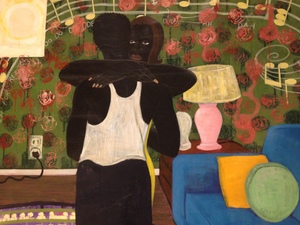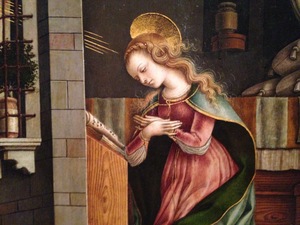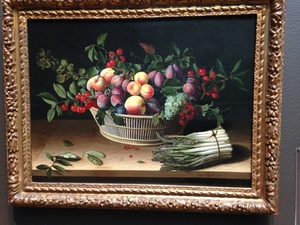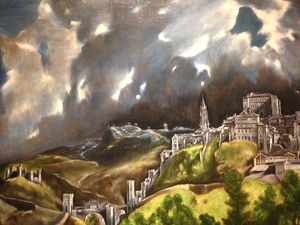Tiepolo Opening
Sunday, September 6, 2020

Giovanni Battista Tiepolo, The Chariot of Aurora, oil sketch, 1760s. Detail photo Rachel Cohen.
I’ve long had it in mind to write a bit about Tiepolo – Venetian artist of the 18th century – an artist I’m trying to catch up to, one I suspect is in my future.
It’s the turn of the year. We are back from driving to see friends and family. As we drove the highways, we looked for horses. On and near lucent rivers, we looked for swans.
It’s raining. Most of the garden did well in our absence, a few things are withered and brown. The school year, unlike any other, will begin for our family the day after tomorrow.
Tiepolo painted myths and allegories, and painted religious paintings as if they were myths and allegories. He painted on ceilings and he painted the life of skies. He is a sort of intersection between the interests of our two children – our son who loves the vastness of astronomy, rockets, skyscrapers, our daughter who loves the magical endless patterns of myth.

Across the country, museums are reopening. The Metropolitan Museum of Art in New York reopened this past week. Our own Art Institute of Chicago has been open for several weeks, and I hope to go in the next weeks to see two shows that promise to be wonderful, the El Grecos and the Monets. El Greco’s sense of height and sky and cloudy mediation having offered much to Tiepolo. Tiepolo’s palette, brushwork, reflective sense of light having offered much to Monet.
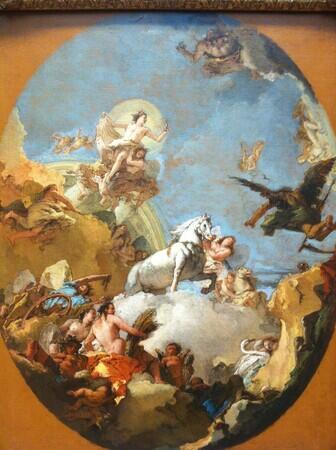
Tiepolo, The Chariot of Aurora, large oil sketch, 1760s, The Metropolitan Museum of Art. Photo Rachel Cohen.

Tiepolo, The Chariot of Aurora, Detail photo Rachel Cohen.
I can hear the children downstairs – he is tracking which human buildings reach above the “rising condensation line,” the line of the clouds; she is following the taxonomy and hybridization of impossible creatures – vulturecrocs, and kinds of unicorns.
The sense is of aperture – the opening and closing of spaces and the stream of creations flowing through.
**
Nearly ten years ago, I read a wonderful book on Tiepolo, by Roberto Calasso, called Tiepolo Pink. I was struck by its insights and began to promise myself to look more at Tiepolo. In 2014, I was in New York and did look closely at the Met’s wonderful Tiepolos. I took this picture of the large oil sketch from 1752 that was the basis of one of Tiepolo’s most celebrated ceilings, the Allegory of the Planets and Continents, in Wurzberg.

And I took four pictures of The Chariot of Aurora, another oil sketch, of the 1760s, for a commission never painted.

Look at the aperture, the skies erupting upward.

Look at the chariot of dawn, and at Ceres with his sheaf of wheat, who gave his name to a dwarf planet, the largest object in the asteroid belt between Jupiter and Mars.
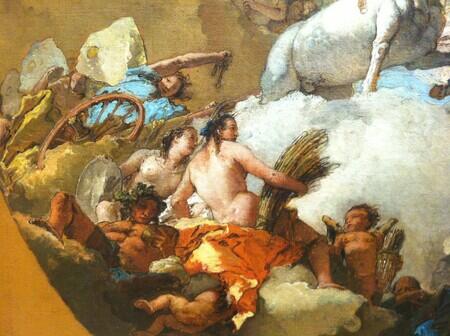
At the figure of Time, ancient and robed in blue, at the swans.





